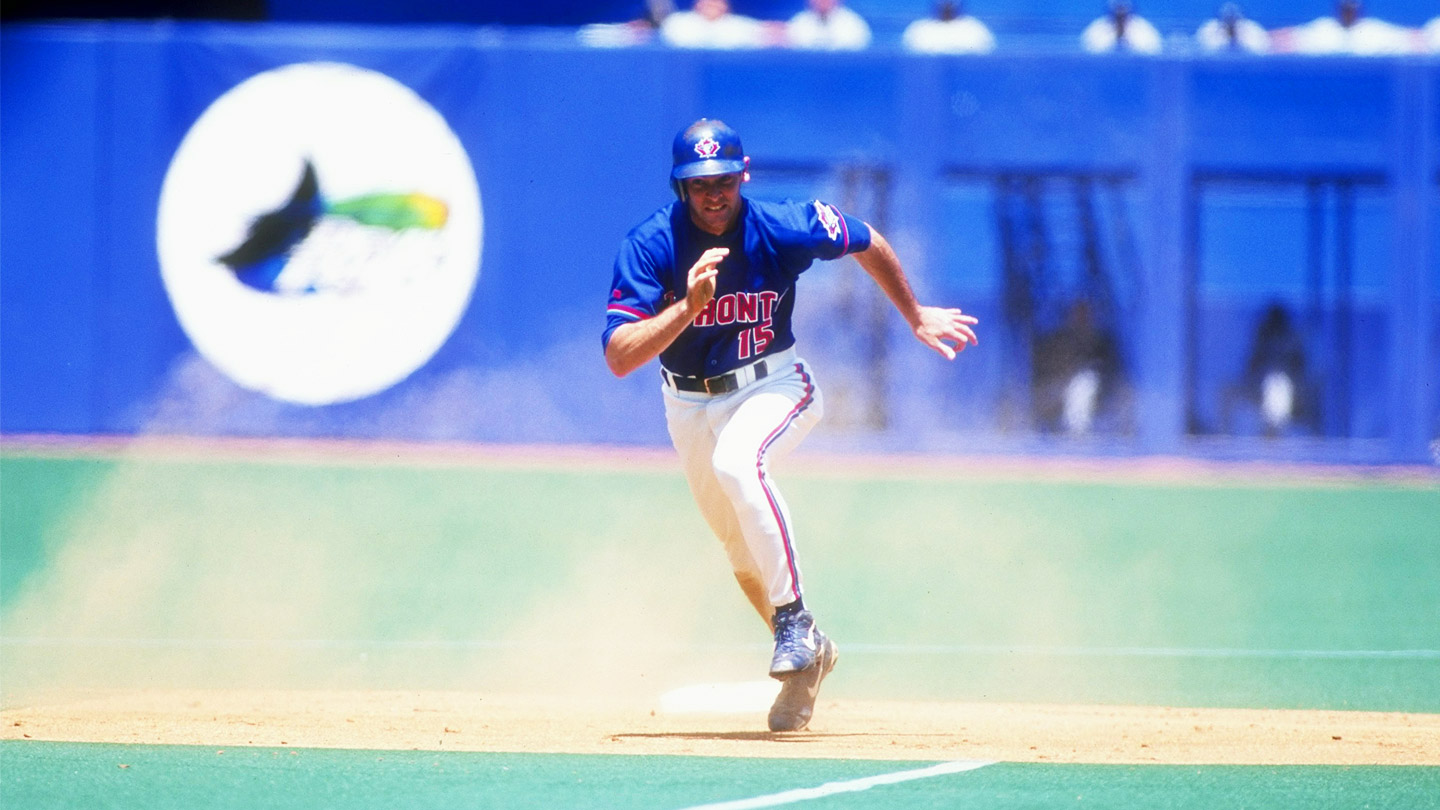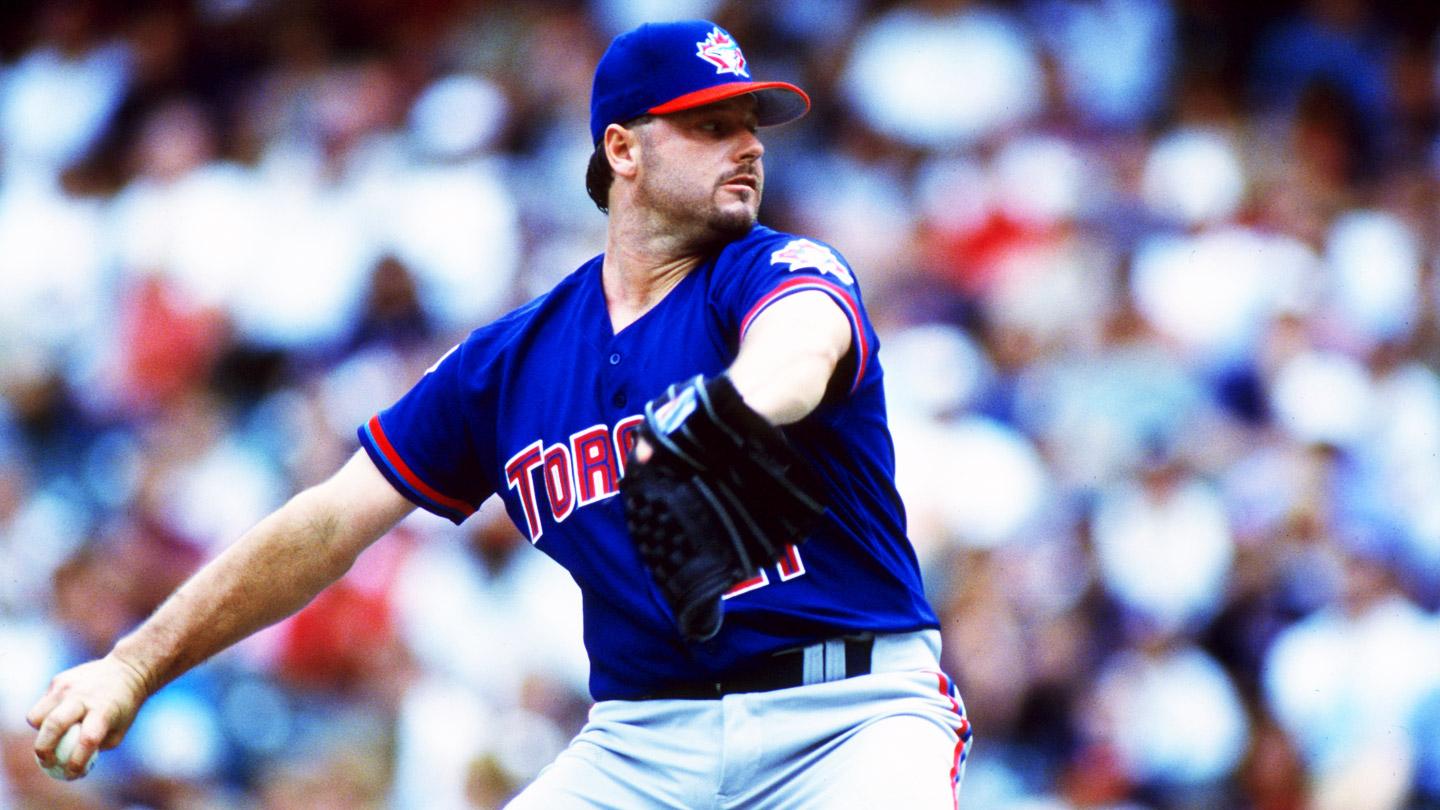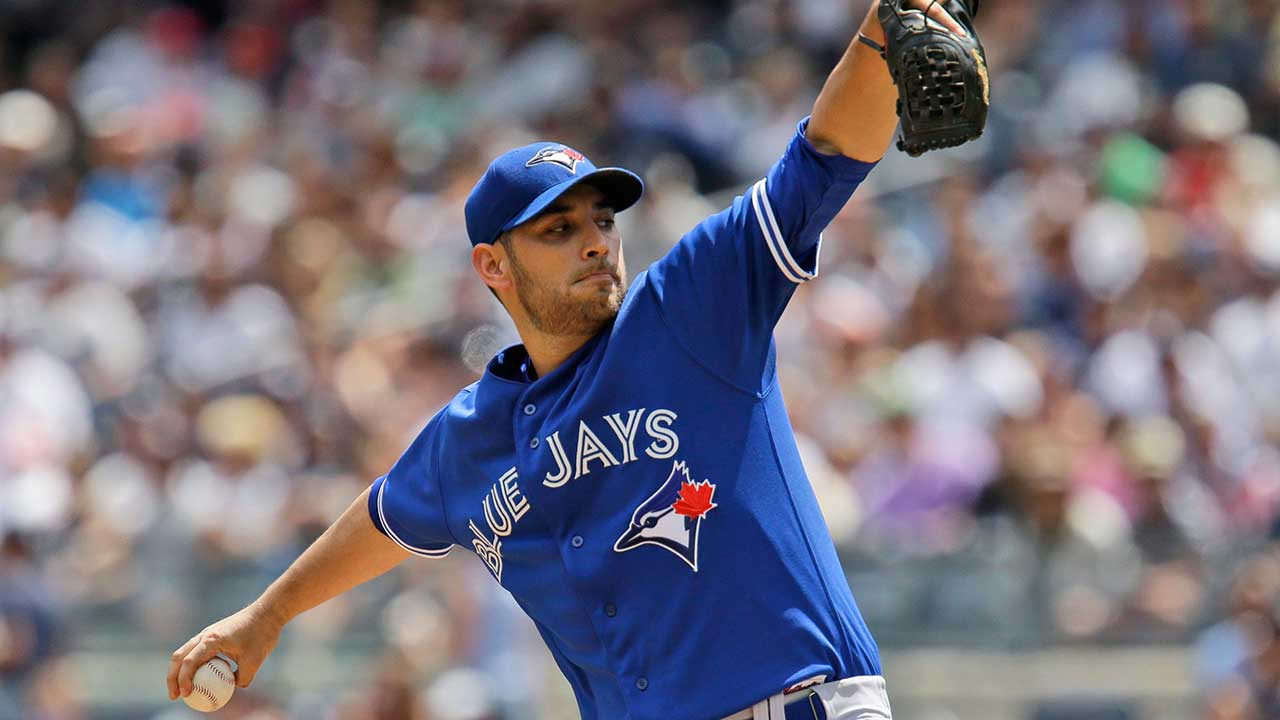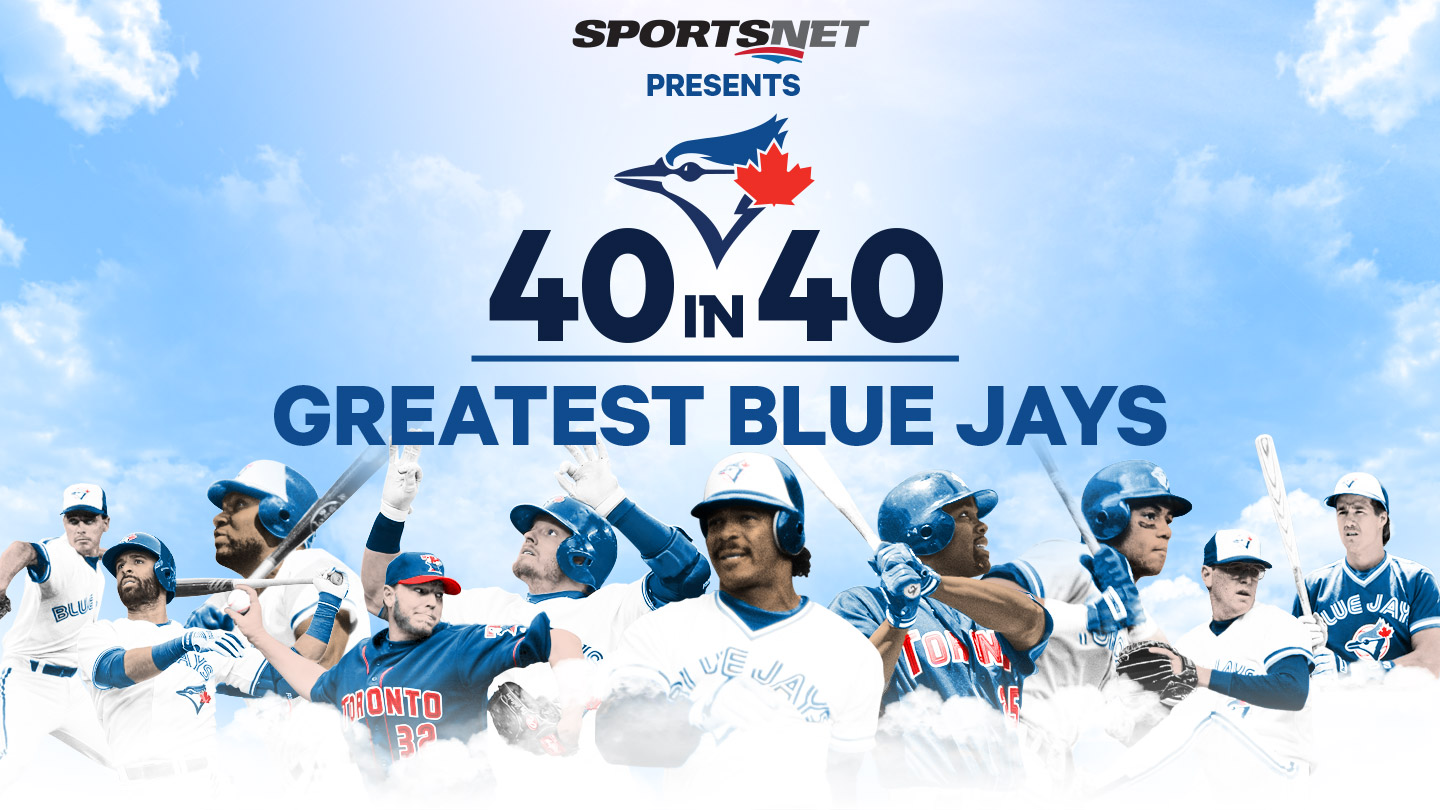It’s hard to believe 18 summers have passed since Shawn Green last wore a Blue Jays uniform, at least in part because the image of the outfielder always said boy, or even wunderkind. More than a few Jays have had great seasons, even great seasons as young players, but none looked as young, even boyish, as Shawn Green. And, with the possible exception of his teammate Carlos Delgado, no homegrown player held as much promise as Green did in the late ’90s. Back in the summers of ’98 and ’99 it was easy to imagine that their names and numbers would someday go up side by side on the team’s Level of Excellence.
There have been a few crushing disappointments in the Jays’ history. Thirty-one years on, the freefall in ’87 in the last week of the season to lose the division to Detroit still feels like an open wound for fans of a certain age. Green’s departure from the Jays was a disappointment of a different kind, however. It played out off the field, out of view. Yeah, when they draw up these lists of heartbreaks the end of Green’s time with the Jays might not come to fans’ minds simply because it was an era that they wanted to forget — but the team lost a superlative talent and so much more than that.

Shawn Green, now 46, sounds wistful when he talks about his time in Toronto. “As the team I signed with out of high school the Jays will always have a special place in my heart,” he says.
In the beginning, he was very nearly not a Jay at all. Toronto drafted the first-team high-school All-American out of California in ’91 with the 16th-overall pick in the June draft. While his father supported the idea of signing with Toronto, his mother held out hope that he would go to school. It seemed like his mother was winning out because Green had already enrolled at Stanford when the Jays made their pitch. “I could have stayed on [at Stanford], but then Pat Gillick and Gord Ash talked to my mom and told her that the team was going to look after me… that I was going to be in good hands,” Green says.
Green’s rise through the Jays’ system was rapid. He was impossible to keep down. From high-A through double-A and up to triple-A he landed on all-star teams, winning the International League batting title in ’94, the year that Baseball America had designated him the most exciting prospect in that league. By then, Green already had an unusual distinction: He was a minor-leaguer with a World Series ring. He had been a September call-up the previous year, making his major league debut at just 20, and though he didn’t play in the ’93 World Series, the team gave him the jewelry.
To what degree Green felt like a member of that championship team is hard to say, given that he got into only three games and failed to register a hit. He also doesn’t believe that the ’93 squad was the best he had played on during his 15-year MLB career. He made the post-season twice later in his career, with the Dodgers and the Mets, yet he considers them a step down from a Toronto team that didn’t even make it into the playoffs. “That ’98 team was the best that I ever played on,” he says.
This isn’t a case of a retired player forcing some nostalgia on the occasion of the Jays’ 40th anniversary. He makes a strong case: “I always tell people, Roger Clemens won the Cy Young but really in the second half of the season he was our third-best pitcher behind Chris Carpenter and Kelvim Escobar.”
The ’98 Jays had a handful of holdovers from the World Series teams, including Ed Sprague, Tony Fernandez, Pat Hentgen and Juan Guzman. Even Dave Stieb put in a throwback cameo.
At DH, they had a big name swinging a big bat — Jose Canseco, who mashed 46 home runs a season before he became an MLB punchline. The team also had a few elite veterans coming off the bench in Juan Samuel, Tony Phillips and Benito Santiago. And they had the 24-year-old Green coming into his own with 35 homers, 100 RBI and 35 stolen bases. On top of that he had 14 assists from the outfield. He was a verified five-tool player.
Where does Shawn Green rank among the 40 greatest Blue Jays of all time? Have your say by clicking here.
The Jays, though, were in precisely the wrong place — that is, the AL East — at precisely the wrong time — that is, the ascendancy of the New York Yankees. The Jays’ 88 victories would have tied them with the Texas Rangers in the AL West and left them one game behind Cleveland in the Central. And given the imbalance of the schedule and the heavy load of in-division games against the Yankees (114 wins) and the Red Sox (92), it’s easy to imagine the Jays rolling into the playoffs if they had just been elsewhere. Their misfortune was to come along before the advent of the second wild-card and the play-in game. “If somehow we had been able to get into the post-season we could have gone deep, especially with our starters,” Green says, pointing to Clemens, who went 20-6, and Carpenter and Escobar, the latter an unexpected breakthrough in mid-summer.
In ’99 it wasn’t quite more of the same. Clemens was gone and Carpenter missed a few starts, though David Wells returned to the club and racked up a credible 17-10 record, and Roy Halladay was establishing himself as a starter. Canseco was also gone and his bat was never really replaced. The turnover went right through the bottom of the roster. The Jays fell back to 84 wins and were never really in the hunt.

The team would have fallen below .500 were it not for Green. His season still ranks among the best in franchise history: With a .309 average, 42 homers and 123 RBI, he won a Silver Slugger award and made but one error in right field all season, earning himself a Gold Glove. Green was matched by Delgado, who belted 44 long balls and drove in 134. They were arguably the most exciting tandem in the game. Green was 26 and Delgado 27, and they were only just entering their primes. It seemed they would form the core of a Jays team that would enter the 2000s in the same position as the one that entered the ’90s. Optimism fairly abounded.
Then it all came apart. And suddenly.
In early November 1999, the Jays announced they had traded Green and a minor-leaguer to the Dodgers for outfielder Raul Mondesi and reliever Pedro Borbon.
The deal hinged on Los Angeles signing Green to an extension but that was done quickly if not easily. Green landed a six-year, $84-million contract. The $14-million average annual value was then second only to that of the $15-million average of L.A. pitcher Kevin Brown’s seven-year, $105-million deal. By 2004 and 2005, the final years of his contract, Green stood to make $16 million, then the highest single-season salary in baseball history.
“In making this trade Toronto gets two players who can contribute to our club immediately,” Blue Jays general manager Gord Ash said. “Raul Mondesi is an exciting and multi-talented player whose contract status is not an issue. He will be an impact player in the American League.”
Green was entering the last year of his contract, one that had paid him $3 million in ’99. He had more than earned an extension, and the Jays could hardly risk him playing out his deal and becoming a free agent after the 2000 season. But Ash said Green expressed a desire to play closer to home after rejecting a five-year, $48-million extension offer. On Oct. 11, Jeff Moorad, Green’s agent, told Ash his client would not re-sign with the Blue Jays.
The optics weren’t great for Green. It looked like he had forced a trade. It looked like he put more value in playing for a team close to home than the franchise that had supported him in his development. He was going to a team that had won just 77 games in ’99.
The optics weren’t great for the Jays either. It looked like they couldn’t compete. It looked like their offer to Green was made more to keep up appearances than to convince him to stay on. They were losing an electric talent who was days away from turning 27.
Calling it “a transaction we’d prefer not to make,” Ash wasn’t dissembling. “Shawn made it clear that his intention was not to sign a long-term contract in Toronto and his preference was to play in a U.S. market, specifically Los Angeles,” Ash said. “Shawn advised the club that his decision was based on his desire to settle down and return home.”
Today, Green says that it wasn’t quite so clear cut as it was portrayed, even though he was ecstatic about getting a chance to play for the Tiffany franchise in his native California. He hadn’t assumed that the Jays were going to trade him. “I hadn’t planned on leaving Toronto. I was looking at buying a condo there,” he says. “I was probably like most ballplayers. I thought I’d play my entire career with the organization that I broke in with… with friends that I came up through the minors with, for the same managers and coaches and people in the front office.”
That said, Green also recognized that there were other factors involved. “There was the potential sale of the club,” he says. “And there was the dollar.”
No one could have a better perspective of the bind that Ash was in than did Green.
The Jays had been the model of stability with founding owners Labatt. Team and brewery enjoyed a good ride through their first 18 seasons, with on-the-field success, league records for attendance and the owners’ brand basking in the shine reflected off the franchise. The trouble didn’t filter up from the bottom but rather started at the very top. Labatt was taken over by Interbrew and the Jays were included in the package. Exactly how committed Interbrew was to the Jays was in doubt from Day 1. Labatt had understood the Jays’ place in the market and the value of the association with a team that had a couple of World Series titles. Interbrew brewed beer. Most of it in Belgium. They didn’t know from baseball.
Bigger than that was the Canadian dollar — when Green first arrived in Toronto the buck was worth almost 80 cents American, but by ’99 it had fallen to 67 cents and was still trending downward, a couple of years away from bottoming out. Again, maybe the Jays’ previous owners would have waited out the storm. Maybe Labatt would have factored in the appreciation in the value of the franchise across a couple of decades and drawn up a different budget for Ash to work with. For Interbrew, though, there was no history to draw on. The hands of those in Jays’ management were tied and the trade of Green was a grim inevitability.
There’s a hell of a difference between offers of $48 million and $84 million, but in some ways Ash and Green were even farther apart than that. They were at the mercy of things far beyond their control, market forces at a scale bigger than a GM and player, bigger than a franchise and its players. The irony worked on a couple of levels. On one count, Green’s excellence made him arguably the most exciting Jays player to that point in team history, but at the same time made him unaffordable. On another, the Dodgers’ signing of Green had raised the bar for elite MLB players, thus Ash’s task of extending Carlos Delgado had become much tougher. Wilderness years lay ahead for the club.
Green would go on to have a couple of monster seasons in Los Angeles, where he was full value as an $84-million player. His 49 homers in 2001 stand as the franchise record. At age 30, though, his numbers started to fall off and at 35 he walked away from the game. These days he lives in Newport Beach and, along with going to his daughter’s dance recitals, he heads up Greenfly, a technology company that helps brands create and distribute video content. “I was always interested in technology as a player coming up,” he says. “I would read books about coding. It was something that I was going to pursue probably if I had stayed in school or not played ball.”
Eighteen seasons removed from his days with the Jays, Green admits that he sometimes wonders how his career would look if the Jays hadn’t had to trade him. “There were so many good people [in the organization],” Green says. He says he was especially close to the late Mel Queen, the Jays’ farm director when Green was in the minors and the team’s pitching coach later. “Mel was a good man and it was like Pat and Gord had promised my parents… [He looked] after me. I had great times in Los Angeles, but it was hard leaving so many good people and good friends behind.”
Meditating on Shawn Green’s time with the Jays invites fans to speculate. What if the Jays had been in another division in ’98 or somehow squeezed out a couple more wins against the Red Sox? What if the Canadian dollar had been stronger or a Belgian beer-maker had never shown any interest in a Canadian brewery? What if Green had been able to stay on and bat third ahead of Carlos Delgado in their primes? What might have been, however, should not fully obscure what was accomplished. That World Series ring figured just to be a prelude to much bigger things for Green in Toronto. Ultimately, though, it seems like not-so-hollow consolation for what might have been.






